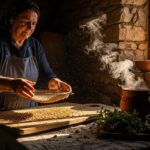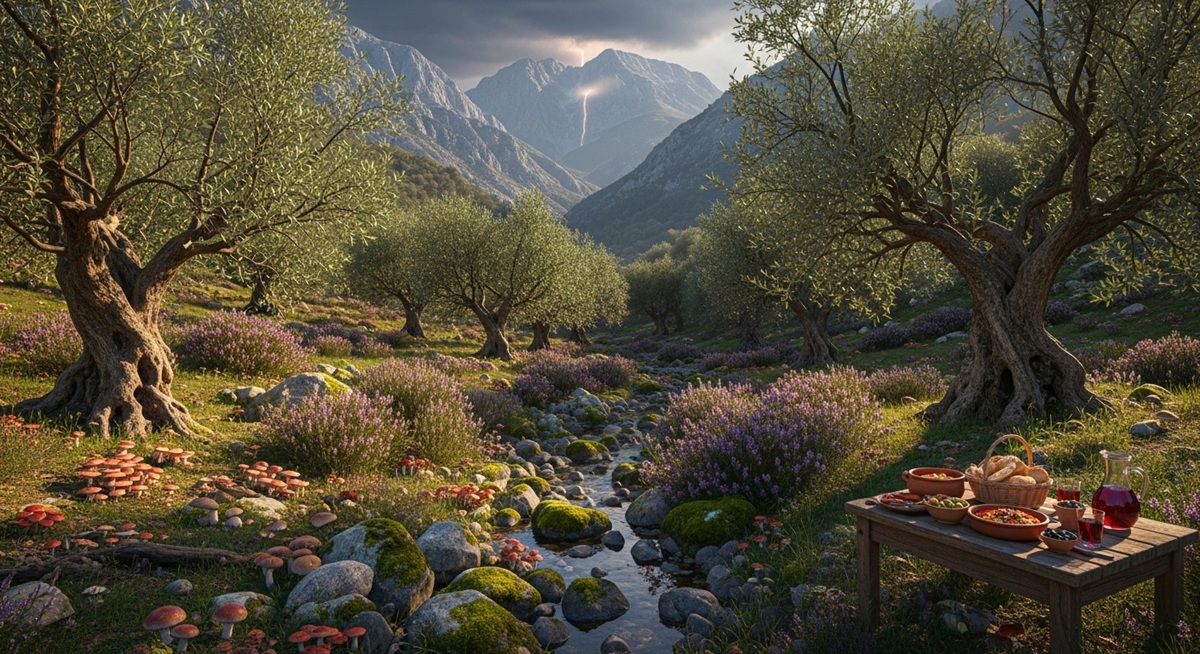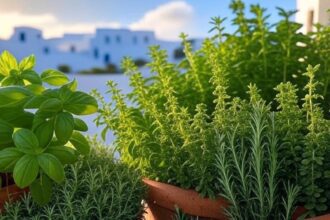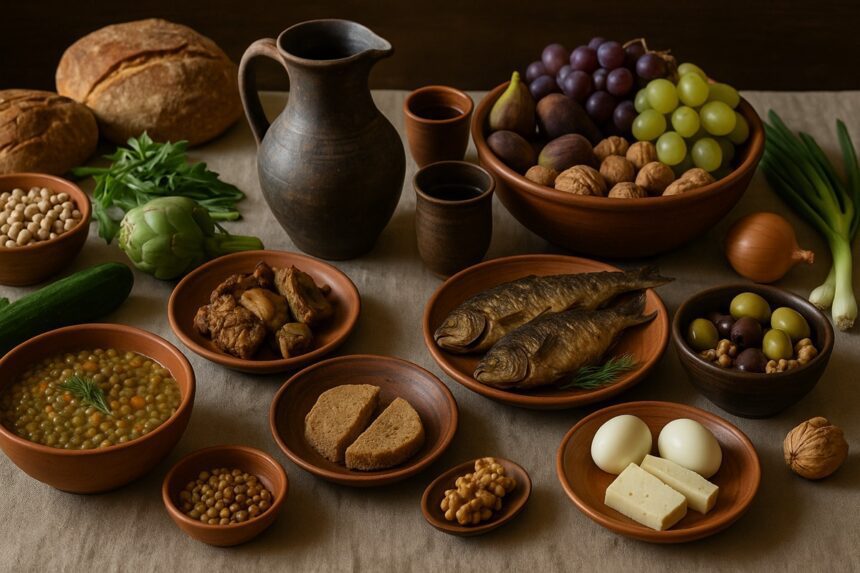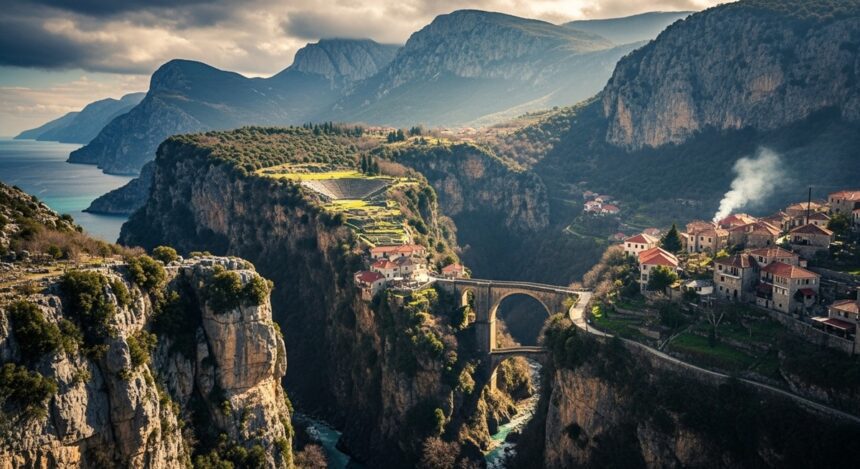To utter the name Mount Olympus is to conjure immediate visions of thunderbolts, golden thrones, and the ethereal, untouchable realm of the Twelve Gods. Yet, below those unreachable, snow-crowned peaks lies a different, equally divine reality: a vibrant, dense, and deeply ancient ecosystem where the true, robust essence of Greek culinary traditions still thrives. This magnificent land is a botanical crucible, a living repository of endemic species, potent medicinal herbs, and hidden fungal treasures.
Olympus’s Edible Secrets
The mountain’s staggering height—peaking at Mytikas (2,917 m)—creates a spectrum of microclimates, ranging from Mediterranean scrubland at its base to subalpine meadows near its summit. This topographical drama results in a phenomenal, unique Olympus flora. It is precisely why the area is designated as a National Park and a UNESCO Biosphere Reserve. The land that allegedly fed the gods now offers profound sustenance to those who know where—and, crucially, how—to look.
A Biodiversity Hotspot in Thessaly
The lower slopes and the surrounding plains of the Thessaly region are cloaked in mixed forests and thick scrub, effectively functioning as a gigantic, natural larder. This remarkable biodiversity means that even a short walk can yield a huge variety of edibles. The unique geological and climatic conditions discourage modern intensive farming, preserving pockets of true wild greens unlike those found near any urban centers. The Olympus air is cleaner, the soil is richer, and the flavors derived from these wild finds are infinitely more intense—qualities prized above all in genuine Greek culinary traditions.
The Hunter’s Target: Treasures of the Soil & Shade
For the diligent forager, the natural bounty of Olympus is divided into two main categories: the ubiquitous and essential greens, and the more challenging, elusive fungal finds.
Wild Greens (Horta) – The Greek Superfood
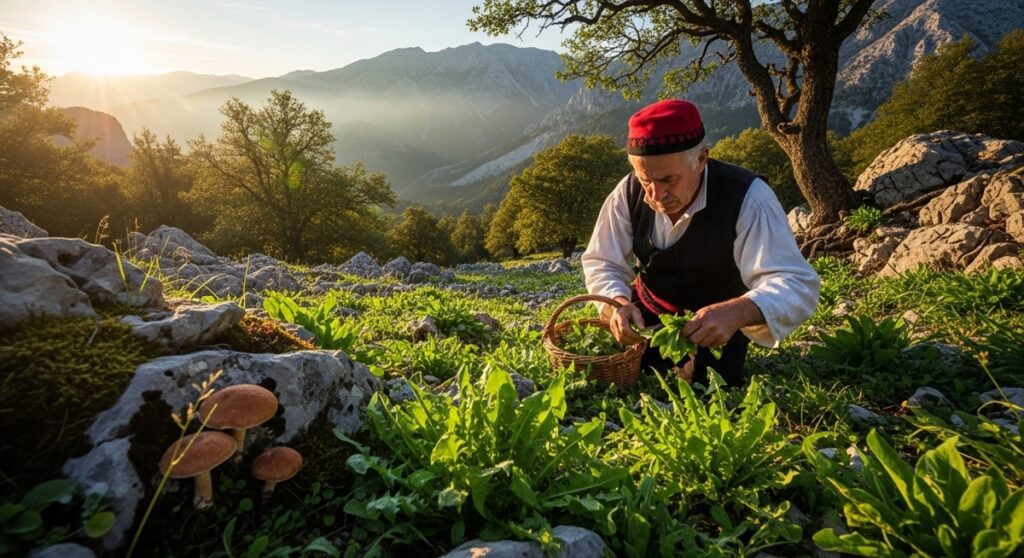
The practice of gathering Horta (wild greens) is a deeply ingrained, almost ritualistic part of the Greek identity. These greens, which are typically boiled simply and then drizzled with pungent extra virgin olive oil and lemon, are far more nutrient-dense than any of their cultivated counterparts. On Mount Olympus, the search for Horta becomes an act of quiet, respectful ritual.
Key wild greens to seek in the spring and early autumn:
- Vlita (Amaranth): One of the most popular greens, found at lower altitudes. When lightly steamed, it offers a slightly bitter, earthy flavour that is highly valued in local cuisine.
- Radikia (Dandelion Greens): The deeply serrated leaves of the wild dandelion are considerably more bitter and robust than store-bought varieties, making them a potent and restorative local delicacy.
- Kafkalithra (Tordylium): This essential herb adds a fresh, aromatic, and slightly anise-like flavor to salads and savory pies, often found thriving near damp creek beds and lower-slope paths.
The Elusive Mountain Mushrooms

Mount Olympus is a true paradise for mycologists, especially during the humid late autumn months following the first significant rains. While expertise is absolutely required—and consulting local guides or experts is non-negotiable—the rewards for the careful hunter are substantial.
The rich, damp forest floors are home to several prized edible species:
- Boletes (Vasilika): Known locally as “royal mushrooms,” the Porcini species (Boletus edulis and its relatives) are widely prized and form the core of the region’s mushroom harvest. They are often dried or used fresh in hearty stews across Thessaly.
- Caesar’s Mushroom (Amanita caesarea): Distinguished by its bright orange cap and delicious flavor, this highly sought-after species is found primarily in deciduous woods, adding an almost royal touch to the experienced forager’s basket.
- Lactarius Salmonicolor: A smaller, bright-colored mushroom found under fir trees in higher, damper areas, adding a distinctive spicy or peppery note to local dishes.
Note on Mushrooms: Never, under any circumstances, consume a wild mushroom without 100% positive identification from a qualified expert. The sheer beauty of the Olympus flora includes dangerous and highly poisonous species.
Herbs, Mythology, and Sustainability
The mountain offers more than just greens and fungi; it is the ultimate source of some of the most potent medicinal herbs known to the Mediterranean diet, all of which must be gathered with the utmost respect and caution.
A Pantheon of Medicinal Herbs
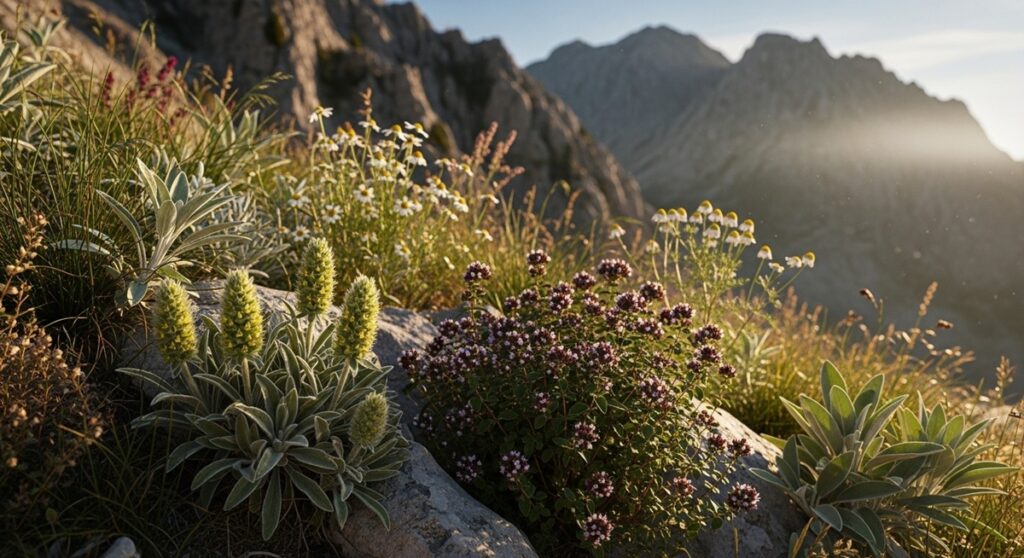
The air on Olympus is permeated by the intense scent of perennial herbs, all bearing histories as long as the mountain itself.
- Greek Mountain Tea (Sideritis): Perhaps the most famous Olympus flora export. Sideritis (often called ironwort) is used in one of Greece’s most popular and restorative herbal infusions. It thrives on the rocky, drier slopes. Its cultivation and foraging are now strictly monitored due to its immense popularity as a medicinal herb.
- Wild Oregano (Rigani): The wild oregano harvested high on the mountain possesses a vastly more intense flavor and aroma than commercial varieties, making it essential for authentic Greek culinary traditions throughout Epirus and Thessaly.
- Chamomile and Sage: These ubiquitous herbs are found in abundance, offering traditional remedies and highly aromatic additions to both food and drink.
The Ethical Forager’s Code
To ensure that future generations can partake in this magnificent natural wonder, adherence to sustainable harvesting is paramount. The ethics of foraging are a crucial component of the experience, especially in a protected area like Mount Olympus National Park.
- Know the Law: Confirm all local regulations before harvesting anything, particularly within a National Park. Permits are often required for large-scale collection.
- Take Only What You Need: Never strip an entire patch of Horta or mushrooms. Leave at least one-third of the plant/cluster intact to ensure it can regenerate for the next season.
- Cut, Don’t Pull: When collecting wild greens or herbs, always use scissors or a knife to cut the plant above the root, preserving the crucial root system for future growth.
- Practice Safety: Carry the right gear, inform others of your route, and, most importantly, never eat a mushroom unless you are absolutely certain of its identity and purity.
By respecting the ancient mountain and following the tradition of responsible foraging, you are not just gathering food; you are actively participating in a timeless ritual—a quiet conversation with the very landscape that birthed the Greek gods. Your Greek vacation becomes an immersive exploration of the land, the lore, and the enduring, profound taste of the truly wild.




